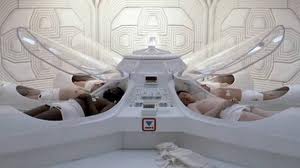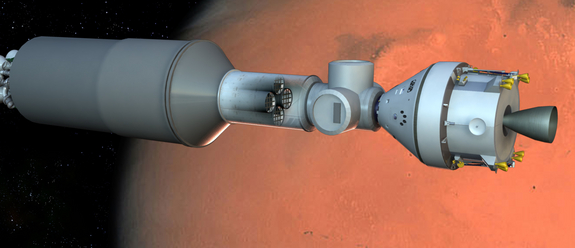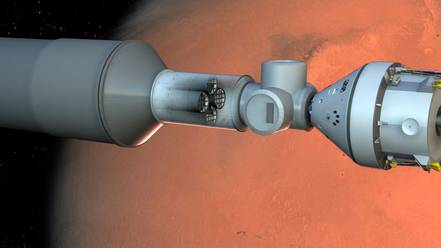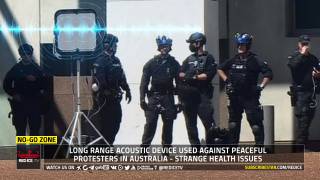Dreaming of Mars: How Astronauts Could Hibernate On Long Voyage

There are ambitious projects to get humans on Mars largely driven by entrepreneurs with private and corporate investment. Companies such as Space X and Mars One are speeding towards the goal of colonizing the red planet.
NASA, currently lagging behind such ventures, is attempting to catch up by revolutionizing technology to make the challenge of human space travel less difficult and arduous so that humans might one day literally dream their way to Mars.
Space.com explains:
---
Incredible Technology: How Astronauts Could Hibernate On Mars Voyage
By Mike Wall | SPACE

By the time humanity is ready to put boots on Mars, the long cruise to the Red Planet may be as easy as a dream.
NASA-funded scientists are investigating ways to induce a hibernation state in astronauts. The work could help bring manned Mars missions closer to reality by making the journey to the Red Planet cheaper, safer and less taxing for crewmembers both psychologically and emotionally, researchers said.
"Every year, it’s, ’We’re going to go to Mars in 20 or 30 years,’" said project principal investigator John Bradford, of SpaceWorks Engineering in Atlanta. "We plan to help stop that slide. This, we feel like, addresses a number of the key challenges, and maybe we can eliminate some of the technology requirements in multiple areas."
Reducing cost and risks
It takes six to nine months to get to Mars using traditional propulsion technology. Keeping astronauts happy and healthy for such long stretches in deep space would be no small feat, requiring lots of food, water and other consumables, as well as relatively large living spaces that include a kitchen, sleeping quarters and exercise equipment (to mitigate bone loss, muscle atrophy and other hazards of microgravity).
But when astronauts eventually take the trip, it would be significantly cheaper and safer for them to hibernate through the vast majority of it, like bears waiting out the winter, Bradford said. A Mars-bound spacecraft could be much lighter and leaner, for example, or more capable in certain vital areas.
"With these mass savings, we think we can just reduce the cost, or use them to add margin to the system," Bradford told SPACE.com.
"One area would be in radiation shielding," he said. Astronauts "will almost always be contained in one spot. You could significantly increase the radiation shielding over this small area and reduce the dosage they’re taking over the mission."
Hibernation would also lessen the psychological stress of the journey, he added. The astronauts would still be cooped up in a tiny space millions of miles from home for months at a time, but they wouldn’t know it until they were awakened.
Further, the strategy could lessen the need for technological breakthroughs in other areas, Bradford said. Life-support systems would not have to carry such a heavy load, for example. And with enhanced shielding around hibernating astronauts, developing a superfast new propulsion system such as nuclear fusion rockets — which NASA officials have said is a key priority to keep astronauts’ radiation doses down on long flights — may not be necessary.
[...]
Read the full article at: space.com






















